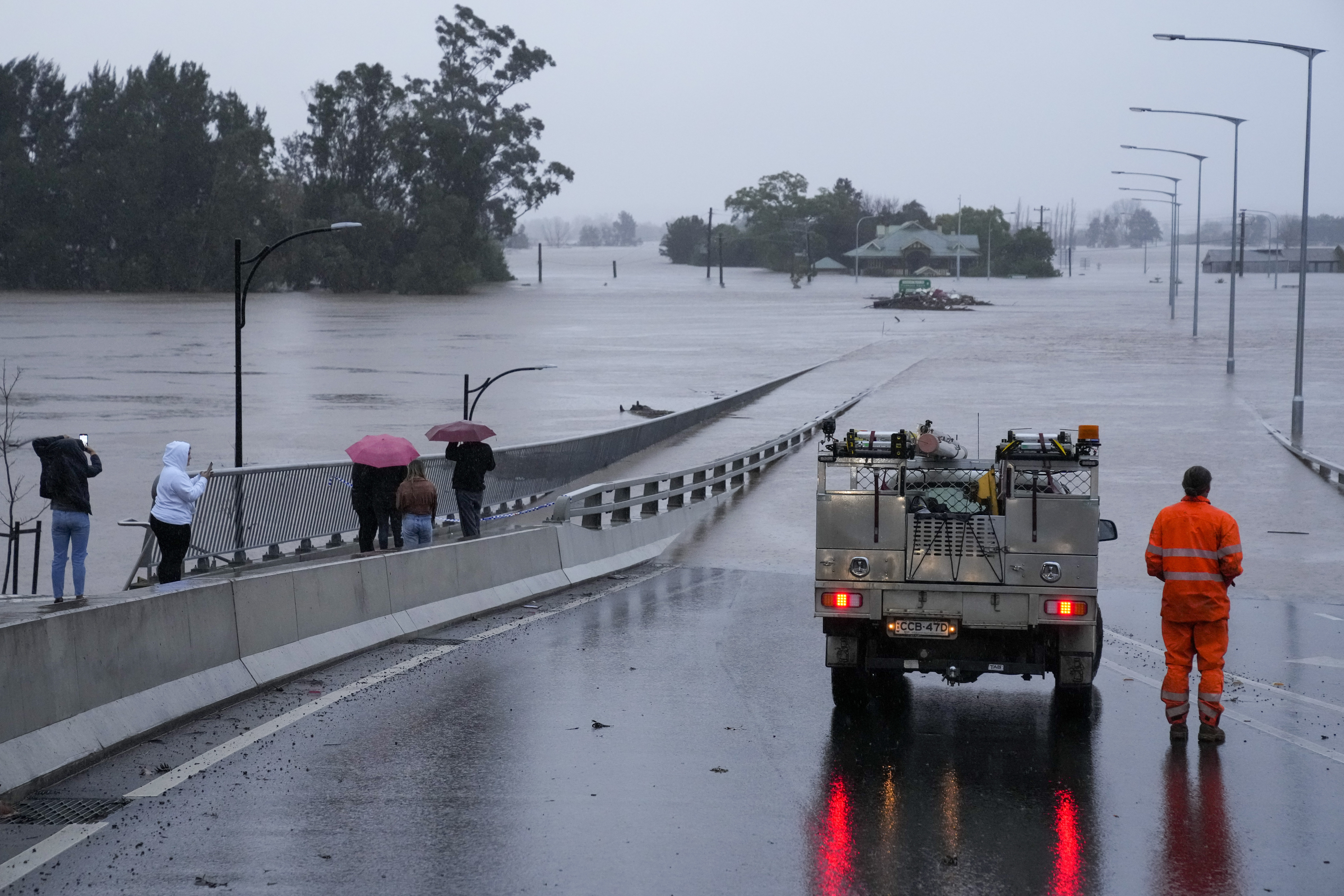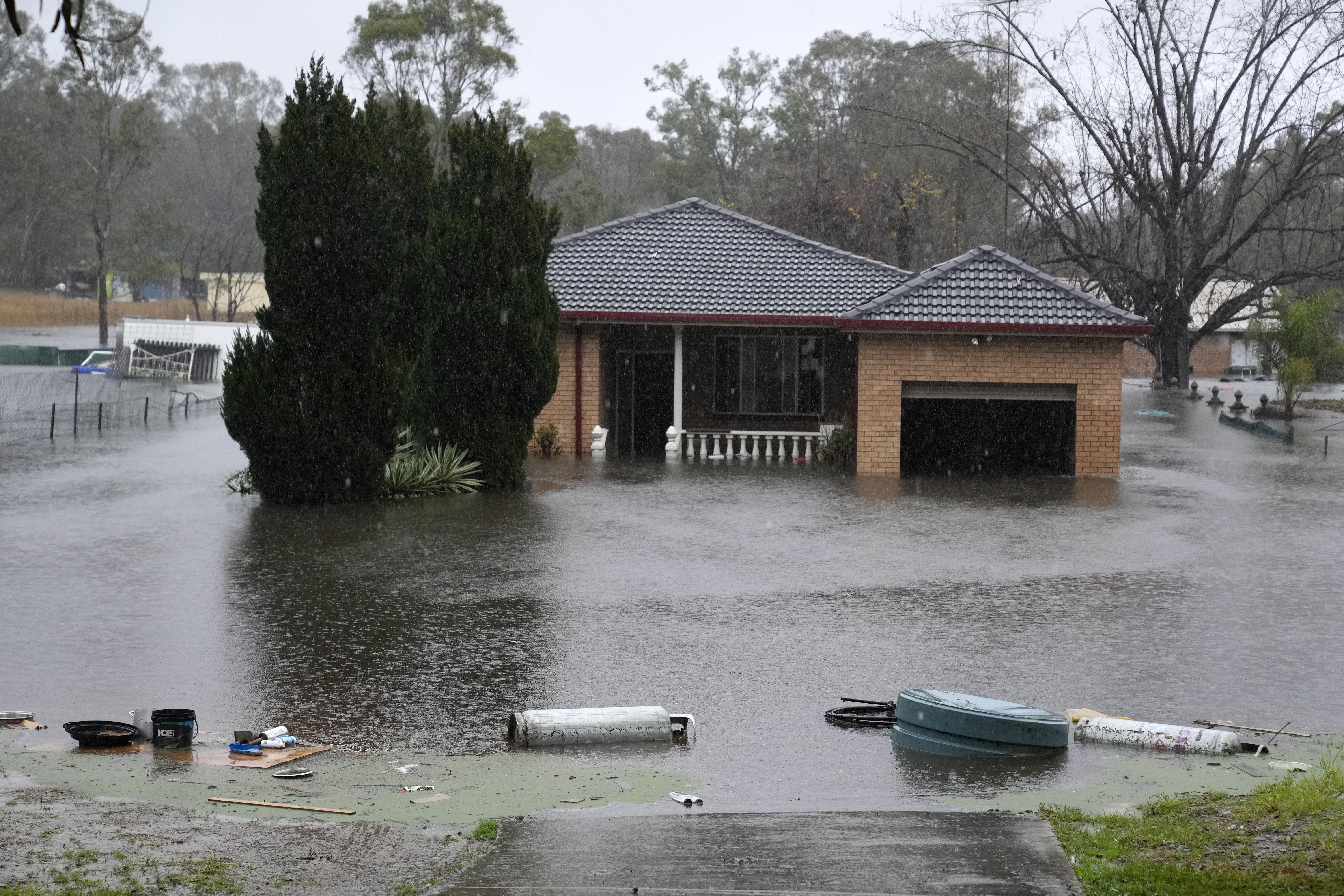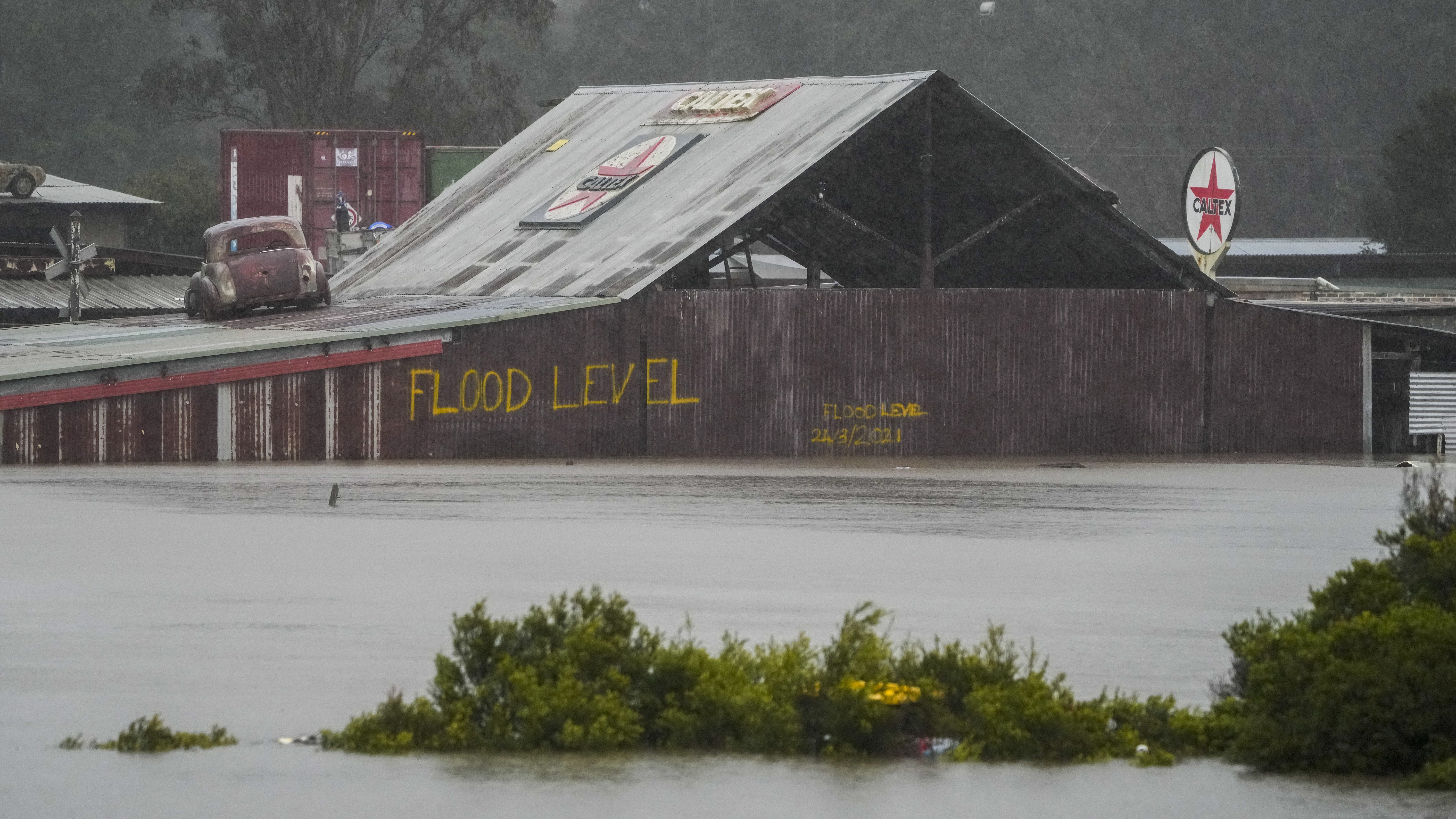
Thousands more people in Australia’s Sydney have been told to evacuate their homes as torrential rains continued to batter the country’s east coast, worsening a crisis in a city that has seen at least three flood emergencies in a year and a half.
About 50,000 residents in the state of New South Wales (NSW), most in Sydney’s western suburbs, were told to either evacuate on Tuesday or warned they might receive evacuation orders, authorities said.
The figure is up from 32,000 on Monday.
“This event is far from over, please don’t be complacent,” NSW Premier Dominic Perrottet told reporters. “Wherever you are, please be careful when you’re driving on our roads. There are still substantial risks for flash flooding.”
Footage on social media showed submerged homes, roads and bridges in the city of five million people as emergency crews rescued dozens of people trapped in partially submerged vehicles.
The floods, heavy rain and powerful winds also led to power cuts for 19,000 homes, officials said.
Much of that damage has been concentrated in western Sydney, downstream of the Warragamba Dam, which has been forced to spill large volumes of excess water after the region received more than 200mm (7.9 inches) of rain in 24 hours. The deluge is more than 17 percent of the city’s annual average, according to the Bureau of Meteorology.

The federal government has declared a natural disaster in 23 flooded regions in NSW, unlocking relief payments to stricken residents.
‘Quicker than usual’
Many people affected have lived through successive east coast floods that struck in 2021 and then again in March and April this year. The March deluge killed 20 people and caused damage estimated at about 4.8 billion Australian dollars ($3.3bn).
“It is so fast, you can’t even get out that quick, you can’t even move anything,” resident Jenny Lee said after parts of her western Sydney suburb of Shanes Park were engulfed overnight.
“You only can get help, take pet dog out. That’s it,” she told the AFP news agency.
In the western suburb of Windsor, resident Tyler Cassel fled his rental home with his partner by paddling through the water in a yellow canoe.
The flood left his home sitting in a lake of water.
“It rose real quick, quicker than usual,” he told national broadcaster ABC. “It’s actually one of the scariest floods I have been a part of.”
Nigel Myron, who also lives in Windsor, told ABC that he had an inflatable boat ready to evacuate his home, although he expected to come back. “At the end of the day, what can you do? It is what it is, and we dust ourselves off from the ashes and rebuild after the floods have come and gone,” he said.
The Bureau of Meteorology said the wild weather, which began over the weekend, was likely to ease in Sydney from Tuesday as the coastal trough moves north, but the risk of flooding could remain through the week as most river catchments had already been near capacity even before the latest deluge.

“The good news is that by tomorrow afternoon, it is looking to be mostly dry but, of course, we are reminding people that these floodwaters will remain very high well after the rain has stopped,” said meteorologist Jonathan How.
“There was plenty of rainfall overnight and that is actually seeing some rivers peak for a second time. So you’ve got to take many days, if not a week, to start to see these floodwaters start to recede,” How added.
Meanwhile, New South Wales Port Authority chief executive captain Philip Holliday said rescue efforts to save a distressed cargo ship could go on for several days.
The 169-metre (555 feet) ship, carrying 21 crew and a cargo of fuel oil, lost its engine in a heavy storm featuring 11-metre (36 feet) swells and began to drift towards rocky coastal cliffs. The ship was briefly rescued by a tugboat that managed to pull it towards the open on Monday before an 11-metre tow-line snapped during the storm, according to Holliday.
It was later secured by two additional tugboats and two anchors and plans are in place to tow the ship to Sydney later this week when the weather permits.







